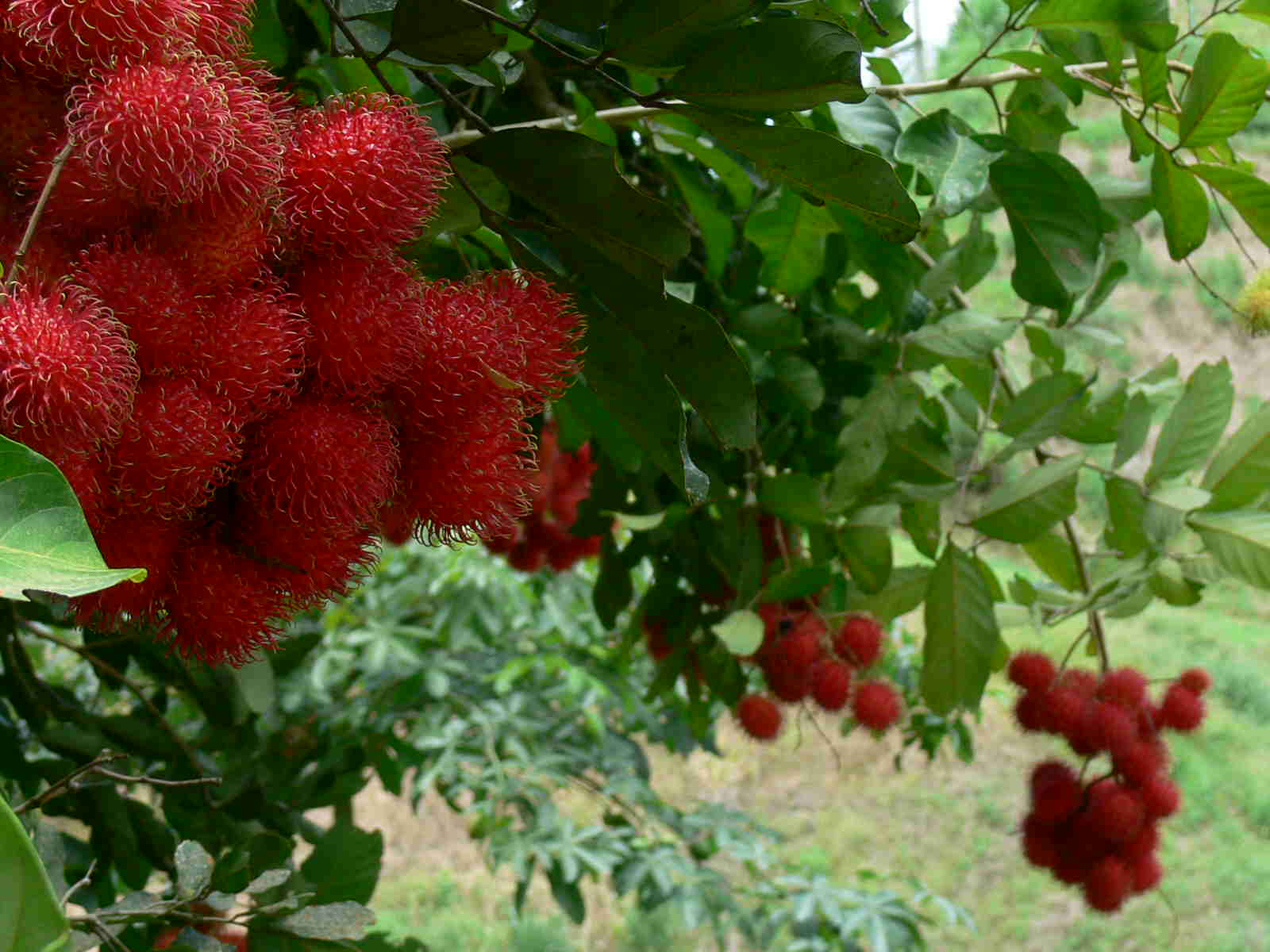
Exotic fruit of Southeast Asia.
The rambutan, Nephelium lappaceum, is a fruit considered exotic to people outside of its native range. To people of Malaysia, Thailand, the Phillippines, Vietnam, Borneo, and other countries of this region, the rambutan is a relatively common fruit the same way an apple is common to many people in cooler climates. This may change for the rambutan over time as availability and distribution improve.
This web site aims to familiarize the public with the qualities that make the rambutan such a wonderful, delicious and nutritious fruit. The word "rambut" in the fruit name 'rambutan' is Malay for 'hairy,' and this refers to the spiky rind. Indeed, without the soft spines on the rind, the rambutan would resemble the lychee (or litchee) which is in the same botanical family. The structure internally is quite similar, with a single central inedible seed and edible white flesh wrapped around it but the skin is the part that makes the rambutan so distinctive in appearance. Other members of the same botanical family, the Sapindaceae, include the longan (Dimocarpus longan), the canepa or mamoncillo (Melicoccus bijugatus), the pulasan (Nephelium mutabile), and guaraná (Paullinia cupana).
Pulasan Guaraná
 | 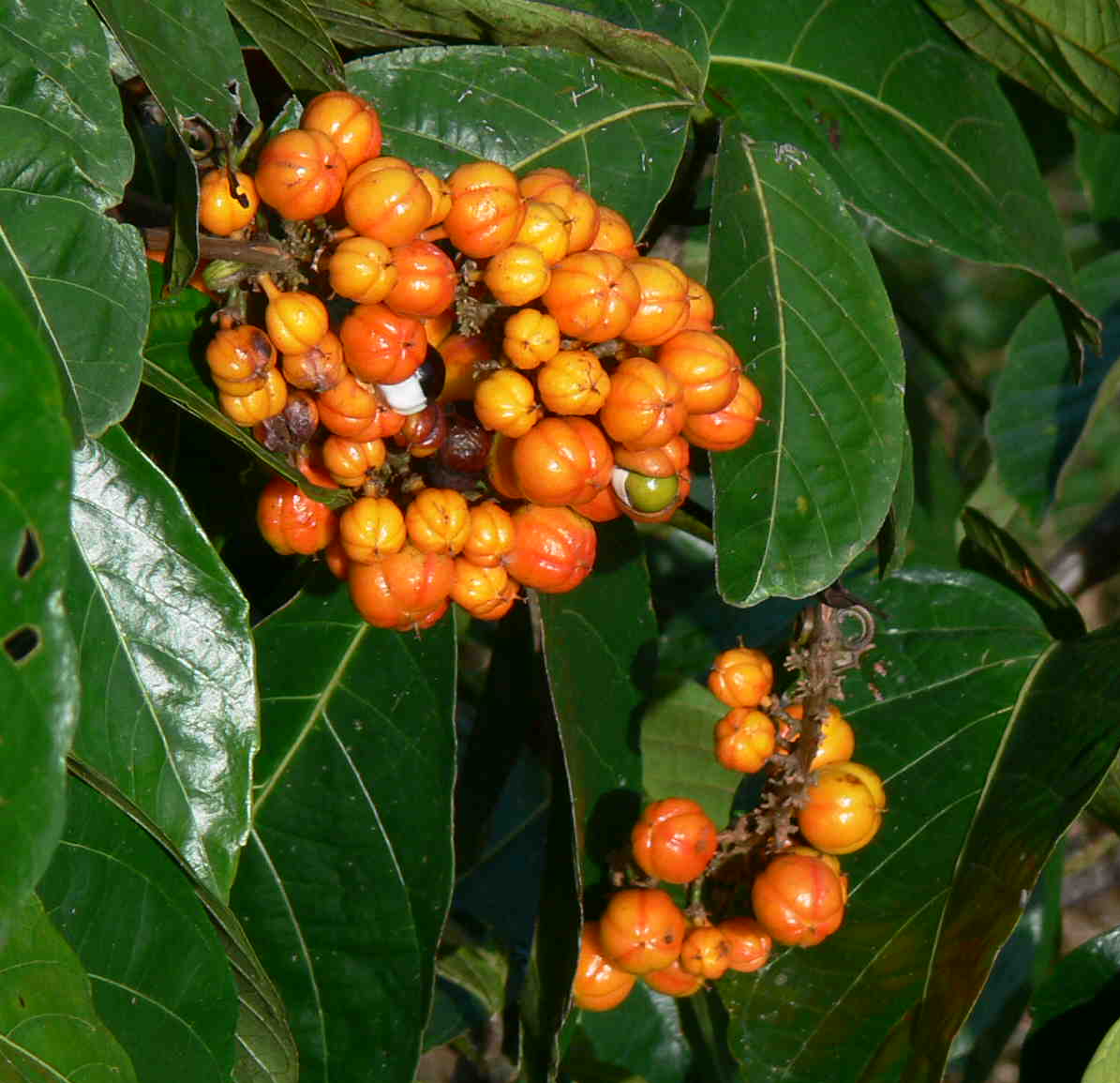 |
How to open and enjoy
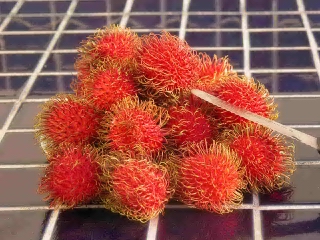

The fruit should be 2" to 3" long and oval but can be almost round in some varieties. The shape can also be more elongated if the seed does not develop. The two pictures above show, on the left, a pile of fully ripe fruit and on the right a cut-away section of the rind revealing the white, edible interior of the rambutan. Look for a bright red color in most cases but there are some rambutan varieties that ripen a bright yellow or yellow with an orange blush.
Removing the rind
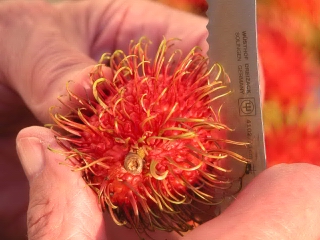
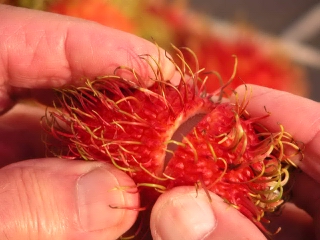
The opening of the rambutan can be accomplished by either cutting part way into the rind or, if fresh, biting into it as the spines are quite soft and pose no threat.
Opening the fruit
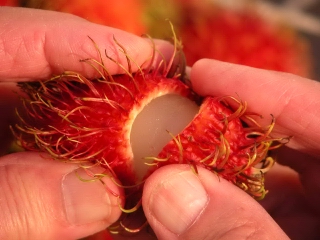
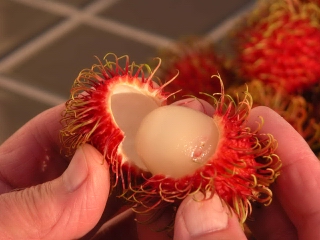
Once the rind is cut part way around the equator of the fruit it can be pried open. There may be some juice if the rambutan is really fresh that you should try to catch before it drips. It will be as sweet as the fruit you are about to enjoy.
Time to enjoy
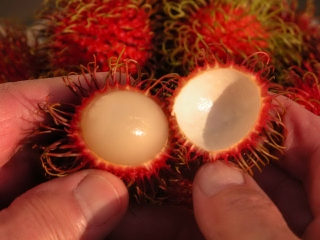
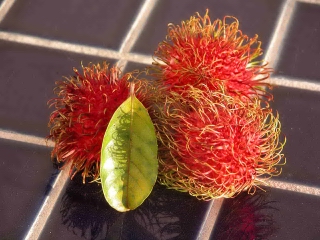
The rambutan can now be removed from the rind by squeezing until it pops out. There is one seed in the center which you discard as it is bitter. The rest of the fruit is yours to enjoy and it is quite refreshing. Besides vitamin C, there are many other nutritional components to savor which you can read about on the nutrition page.
What to look for in a rambutan
Grafted rambutan versus seedling
The pictures below show some of the differences between grafted rambutan varieties that have been selected from superior specimens with known desirable qualities versus those which have been produced from seedlings with unknown qualities. Seedlings can, on occasion, be as good as previously selected varieties and are then used as scion material or budwood to replicate it by grafting it onto a seedling rootstock. Grafting often accelerates the first flowers in numerous plant species and often leads to earlier fruit production than on trees growing on their own roots. The grafted varieties tend to have larger fruit and there may be as few as 9 or 10 to the pound or as many as 16 to 18 per pound. The ungrafted seedlings tend to have smaller fruit and there may be 16 to over 20 per pound. In addition, the edible proportion inside each rambutan fruit may be reduced in the seedling due to typically smaller outside diameters combined with medium to large seeds. The other factor which may affect your enjoyment is that many seedlings have fruit with a very fibrous texture a lot like the canepa (Meliccocus bijugatus) and are quite firmly attached to the seed.
The photo below shows, on the left, the grafted rambutan fruit and on the right, a bunch of seedling fruit. The differences are striking, both in appearance and in flavor. The texture and frequently sugar content are often superior in grafted or selected cultivars. This was, after all, why they were 'selected' for mass production in the first place.
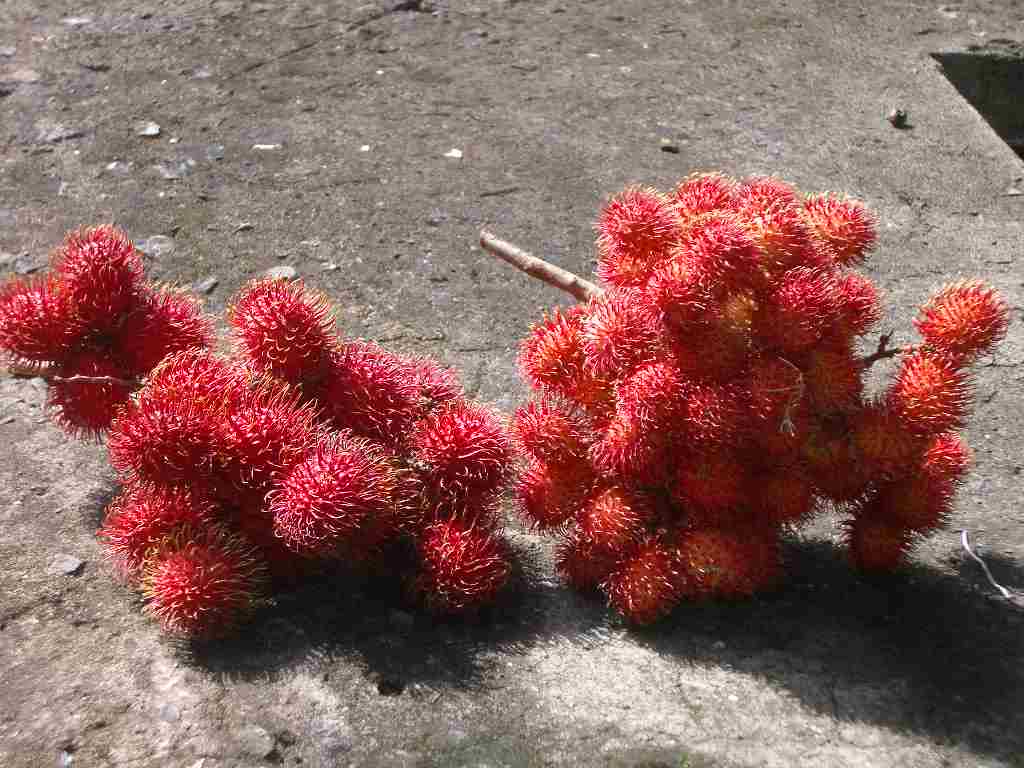
In the left photo below, the grafted variety is in the upper row, the seedling in the lower. In the photo below on the right, the upper two rows are the grafted variety and the fruits below that are from a seedling. Notice the large seed size in the cut open seedling fruit reducing the amount of the edible portion.
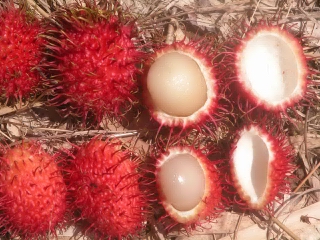
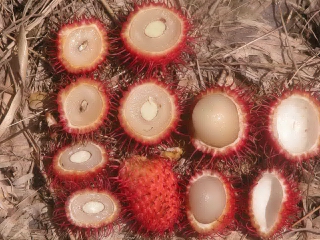
The reward for your efforts

When to pick or when to buy
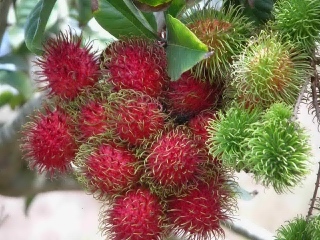
From flowering to ripe fruit, it takes 90 days or more. The green fruits start to turn yellow and then red, sometimes quite rapidly. In some years, the process from green to red can take place in 5 to 10 days. Keep in mind that the ripe rambutan is typically red but there are some varieties that finish with a bright yellow color and some that end up with an orange blush. The flavor is pretty much the same as the red ones. The best fruit have little or no black forming on the tips of the soft spines.
The close-up
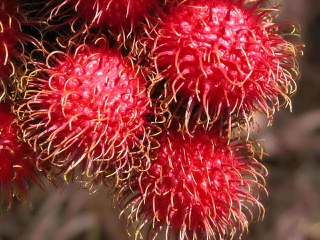
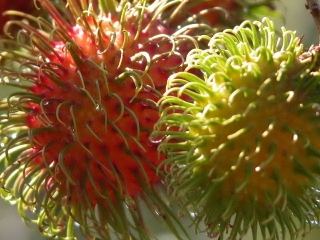
These pictures make it possible to see the detail of the skin of a rambutan. The soft spines, or spinterns, are safe to handle and lose a lot of water after the fruit has been picked. For this reason, to hold them for any length of time in refrigeration requires some sort of plastic film to slow down the moisture loss. The spinterns may turn black within days after harvest but the fruit inside remains quite fresh and tasty for several days or a week longer. If the humidity is high, then the fruit can be held at room temperature in a plastic bag that is not sealed but rather loosely closed.